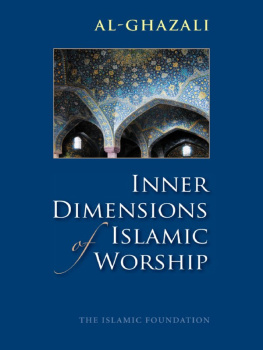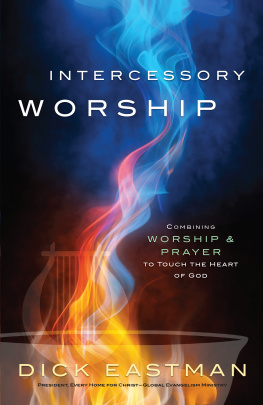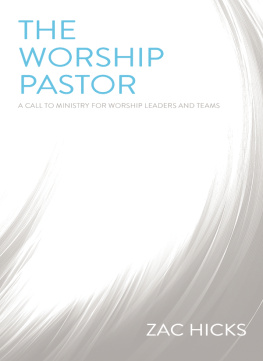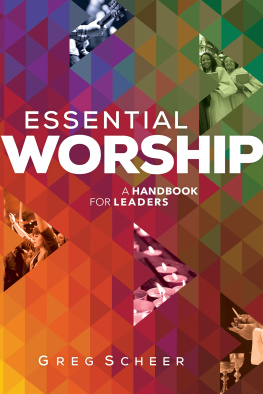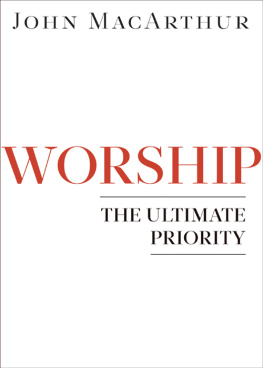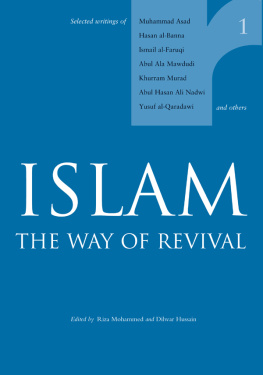Muhtar - Inner dimensions of Islamic worship
Here you can read online Muhtar - Inner dimensions of Islamic worship full text of the book (entire story) in english for free. Download pdf and epub, get meaning, cover and reviews about this ebook. City: Kuala Lumpur, year: 2006, publisher: Islamic Foundation; A.S. Noordeen, genre: Religion. Description of the work, (preface) as well as reviews are available. Best literature library LitArk.com created for fans of good reading and offers a wide selection of genres:
Romance novel
Science fiction
Adventure
Detective
Science
History
Home and family
Prose
Art
Politics
Computer
Non-fiction
Religion
Business
Children
Humor
Choose a favorite category and find really read worthwhile books. Enjoy immersion in the world of imagination, feel the emotions of the characters or learn something new for yourself, make an fascinating discovery.
- Book:Inner dimensions of Islamic worship
- Author:
- Publisher:Islamic Foundation; A.S. Noordeen
- Genre:
- Year:2006
- City:Kuala Lumpur
- Rating:3 / 5
- Favourites:Add to favourites
- Your mark:
- 60
- 1
- 2
- 3
- 4
- 5
Inner dimensions of Islamic worship: summary, description and annotation
We offer to read an annotation, description, summary or preface (depends on what the author of the book "Inner dimensions of Islamic worship" wrote himself). If you haven't found the necessary information about the book — write in the comments, we will try to find it.
Muhtar: author's other books
Who wrote Inner dimensions of Islamic worship? Find out the surname, the name of the author of the book and a list of all author's works by series.
Inner dimensions of Islamic worship — read online for free the complete book (whole text) full work
Below is the text of the book, divided by pages. System saving the place of the last page read, allows you to conveniently read the book "Inner dimensions of Islamic worship" online for free, without having to search again every time where you left off. Put a bookmark, and you can go to the page where you finished reading at any time.
Font size:
Interval:
Bookmark:
Published by
THE ISLAMIC FOUNDATION,
Markfield Conference Centre,
Ratby Lane, Markfield,
Leicestershire, LE67 9SY,
United Kingdom
E-mail:
Website: www.islamic-foundation.com
Quran House, PO Box 30611, Nairobi, Kenya
PMB 3196, Kano, Nigeria
Distributed by
Kube Publishing Ltd.
Tel: +44(0)1530 249230, Fax: +44(0)1530 249656
E-mail: info@kubepublishing.com
The Islamic Foundation 1983/1403 H
Reprinted 1986/1406 H, 1992/1412 H, 1995/1416 H, 2000/1420 H, 2002/1423 H, 2006/1427 H and 2009/1430 H
All rights reserved. No part of this publication may be reproduced, stored in a retrieval system, or transmitted in any form or by any means, electronic, mechanical, photocopying, recording, or otherwise, without the prior permission of the copyright owner.
British Library Cataloguing in Publication Data
Al-Ghazali : Inner dimensions of Islamic worship
1. Worship (Islam)
I. Title II. Ihya al-ulum al-din. English
297.43 B1842
ISBN 978-0-86037-126-7 Casebound
ISBN 978-0-86037-125-0 Paperback
Consonants. Arabic
initial: unexpressed medial and final:
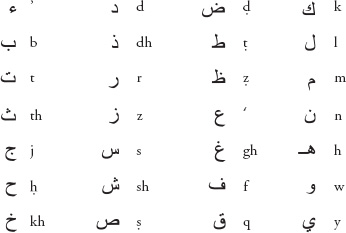
Vowels, diphthongs, etc.
| Short: |  |
| long: |  |
| diphthongs: |  |
Except he who comes to God with a heart, pure and whole, says the Quran, no one shall receive the Inheritance of the Garden of Bliss, of the everlasting Life of happiness, near Allah, on the day when they are raised up, the day when neither riches nor children shall avail. (al-Shuar, 26:85-9); the goal and the promise is not far, but only for him who turns often unto God and keeps Him always in heart; who fears, without seeing, the most Merciful, and comes with a penitent heart. (Qf, 50: 27-8) On the other hand, only those that in their hearts is disease (al-Baqarah, 2:10) shall be denied this Inheritance; they have eyes which can see as far as the farthest galaxies and as deep as the heart of an atom, but they are unable to peep inside themselves for it is not the eyes that are blind, but blind are the hearts within the breasts. (al-ajj, 22: 46) Who shall, therefore, not care to nurture the life in the heart his inner world as he lives his life in the world, in responding to his God?
Life has many dimensions, many layers, many phases. On the one hand, all of them should exist fused together, in continuing dynamic interaction with each other. For life is an integrated whole. It would be folly to so atomise and analyse life as to end up looking at it as through a microscope seeing only one dimension at a time, magnified disproportionately; or with a telescope, resulting in simplistic reductionism. To employ tunnel vision is to live with an unbalanced concern for one aspect and a disregard of others. In all ages men have committed this folly, but perhaps never on the same scale as today. The consequences of this disproportion and imbalance are disastrous: disintegration of person and society, as one lives in one dimension alone, or in disregard of the wholeness of life.
On the other hand, in concern for the wholeness of life, it would be unwise not to recognise each dimension separately and ensure that it has its proper place in the pursuits of life, is looked after and nurtured properly and plays its proportionate role in the development of a person. Only by guarding against both errors can one ensure freedom from anxiety and sorrow and happiness and prosperity, here and in the Hereafter.
Al-Ghazl, in his characteristically powerful, penetrating and inspiring way, leads us in this book into the world of the inner dimensions of worship in Islam. Do not be misled by the title; such is the poverty of human language that we could not choose any better. Worship in Islam is not only observance of the prescribed worship rites Prayer, Almsgiving, Fasting, Pilgrimage but living ones entire life in obedience to God, doing His will and seeking His pleasure, exactly in the way He has laid down. But the worship rites are the essential, and the only, key to that full life of worship. And it is with their inner dimensions that this book is primarily concerned. Also, do not let the word inner make us think that al-Ghazl is embarking upon any venture to effect a split between the inner and the outer, or is going to suggest any esoteric meanings behind the exoteric forms of worship as found in the Sharah. He is not. His inner dimensions include things like praying at the proper time, congregational Prayers, balance and proportion in the outward movements in Prayer, finding the right type of persons to give Alms to, journeying for Pilgrimage with legitimately earned money and caring for animals on the way, etc., etc.
Al-Ghazl is a towering figure in Islam; his influence is enormous. He is also controversial; perhaps no great man can escape controversy. Many have written criticising him. Echoing some of their concerns, though very exaggeratedly, a former European Sufi, in examining the split of inward and outward, castigates al-Ghazl thus: yet this split between dhahir and batin this license to make half-men - outward legalists or [emphasis mine] inward experience-ists had come from al-Ghazl and his notorious Ihya. Indeed his reputation [that he brought together the Sufis and the legalists] rests on the very opposite of his accomplishment he surgically separated the body from its life support (Shaykh Abdal Qadir al-Murabit, Root Islamic Education, Norwich, p.135). However, the dominant view is quite succinctly summarised by Annemarie Schimmel: All that Ghazl teaches is only to help man to live a life in accordance with the sacred law, not by clinging exclusively [emphasis mine] to its letter, but by an understanding of its deeper meaning, by sanctification of the whole life, so that he is ready for the meeting with his Lord at any moment This teaching a marriage between mysticism and law has made Ghazl the most influential theologian of medieval Islam (Historical Outlines of Classical Sufism, Chapel Hill, p.95).
Where lies the truth? And, in that context, what has this book to contribute? This is not the place to examine the whole issue in detail, but it can be said without much hesitation, without implying that all of al-Ghazls teachings are in the same vein, that what is presented here indeed invites us to live a life in accordance with the Sharah, with heart fully alive and present, so that it remains whole and healthy, pure and free from evil, worthy of going to its Lord, without any shame or disgrace upon it. It helps us interiorise the externals. More specifically, it enables us to breathe life into the dry bones of rites and rituals which have lost much of their meaning and purpose as they are performed by hearts which have hardened due to the passage of time. (al-add, 57: 16) However, to look briefly at some aspects of the much larger issues at the heart of the controversy may be worthwhile.
That our personality and life have many dimensions can hardly be disputed. We have an external dimension; and an inner one, too. The crux of the issue is what they are, where they should be placed, how they should be related to each other. Must they stand apart, or in conflict? Must there always be a split, leading to friction and antagonism or seclusiveness, between the inner and the outer, the body and spirit, the surface and depth, the form and meaning, the law and love, the Sharah and the
Font size:
Interval:
Bookmark:
Similar books «Inner dimensions of Islamic worship»
Look at similar books to Inner dimensions of Islamic worship. We have selected literature similar in name and meaning in the hope of providing readers with more options to find new, interesting, not yet read works.
Discussion, reviews of the book Inner dimensions of Islamic worship and just readers' own opinions. Leave your comments, write what you think about the work, its meaning or the main characters. Specify what exactly you liked and what you didn't like, and why you think so.

